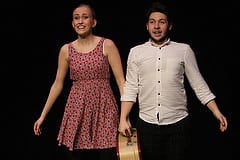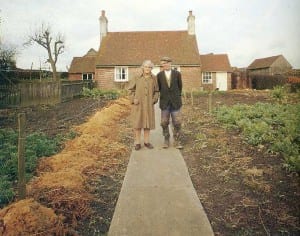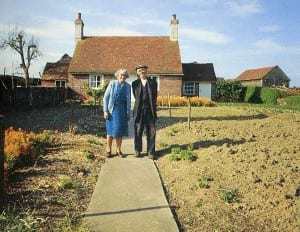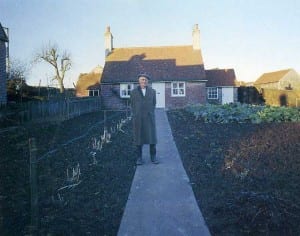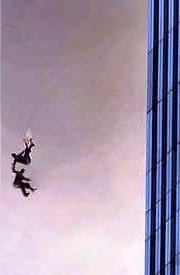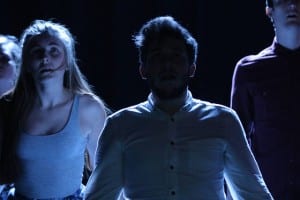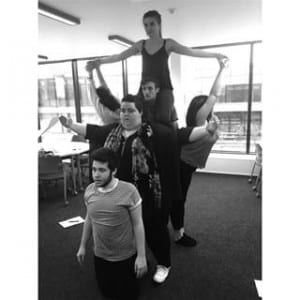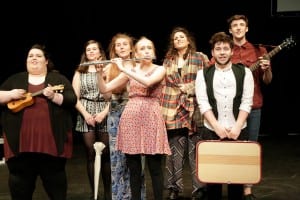
So we have come to an end, When You See It has been performed and the reception it got was fantastic. I wasn’t expecting to be congratulated with that many tears! Yes it was an emotional piece but it is overwhelming that a performance I was dedicated to and cared for so much had created that effect. So a week on, I am able to reflect on the process and overall performance.
In an email from Andy Jordan, senior lecturer at the Lincoln School of Performing Arts, he compliments the performance saying “it was delightfully performed, conceived and staged. The whole company, off-stage and on-stage, should be congratulated…There were many quite beautiful moments, haunting, sensitive, moving, entertaining. You must be proud of yourselves” (2015). I was definitely very proud of it and the company we had created, throughout the rehearsal process you become used to the motions and the routine of the piece and you sometimes forget to really think about each detail of the work and how special it really is. By the time it had been performed and the realisation of the end had hit me, I suddenly remembered how much of an amazing experience and opportunity it had all been and how much I had appreciated what we all created.
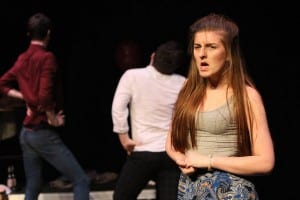
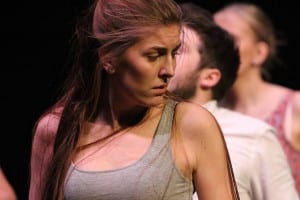
I’m usually quite a good line learner when it comes to learning scripts but for some reason my ‘A pair of teenage girls’ monologue was causing me a bit of anxiety! Everything was fine and dandy for the first few weeks, I had it cracked and couldn’t wait till my moment in the spot light. A few days before the show, it was decided that it would be extended to create a transition for the Selfie song. When rehearsing it with the company I seemed to choke or forget the words which instantly created a panic in me, what if this happened on show day? If I could not get it right in rehearsal how was I supposed to do it on the stage?!
SHOWDAY!!! The day could not go any faster, before I knew it we had done two dress runs and the next time we would go through it would be for the actual performance. The stage was set exactly to how I wanted it, simple but a mystery, there was no sign of what was to be expected.
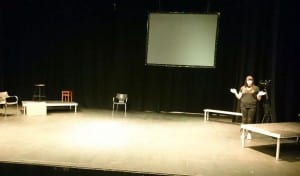
Thanks Laura for being the TV screen they had to take away!
We all made sure that our props were set to where they should be and all our marks were set so we would all hit our spots on stage. Nerves were starting to hit as we used any spare time to keep constantly improving and perfecting our scenes, one scene that I had the need to keep perfecting was mine and Mark’s dance, I do not come from a dancing background so this was a constant challenge for me. If I concentrated on the dance moves then I wasn’t showing enough emotion and if I was being really emotional then I would forget the dance and freeze up. So having the time to practice this right up until we performed was really beneficial.
I felt that the performance the whole way through went really well, I couldn’t of been happier with the outcome. There was a few minor mistakes but I could only notice these because I knew the performance inside out, none of these mistakes affected the performance massively and it still carried on with 100% effort from everyone. The moment of truth came, it was time for my moment…and I sailed through it effortlessly! All the panic I had created from this monologue was not needed, I just threw myself into it and enjoyed myself which in turn created an amazing reaction from the audience and a huge feeling of confidence within myself. This also helped when it came to mine and Mark’s dance, the routine happened with ease which also helped the emotion come out and take over the moment.
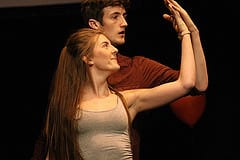
Throughout the whole performance no one left the stage. We had decided that not only would we all be performers but we would also act as an audience on the edges of the stage. This was a great idea because on show day the focus was immense, it was lovely seeing the rest of the company perform whilst watching from an outside view. Everyone had to be aware of everything they did whilst on stage, even though there is action going on amongst other people, the slightest movement from a person outside the action could distract the audience away from what was going on. On the other hand, the company being on stage watching the action guided the audience’s direction on what they should be watching.
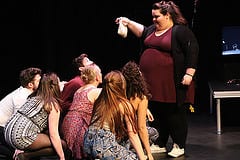
When You See It is one of the best performances I have ever been in whilst being at university, as well as in my life. I often think back to the beginning of university and how close I was to dropping out and going home, but this is the sort of thing that kept me going, that gave me the motivation to carry on. Being part of Refract Theatre Company has shown me what I am really passionate about. It has been the most amazing experience I could ever have and I will take away so much from the process and performance…until we meet again.
Chamberlain. Y (2015)
Crowe. P (2015)
Jordan, A. (2015) Drama Subject Site (DRA-SUBJECT): When You See It. [email] University of Lincoln [Assessed: 24 May 2015]
